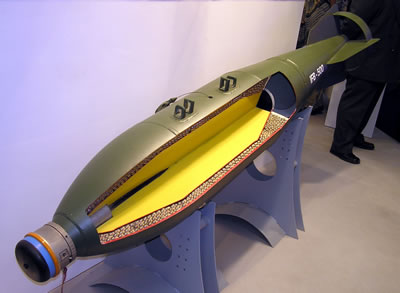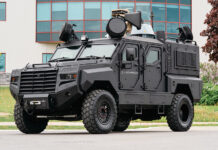 Encouraged by the successful conduct of the Bramos joint venture program, India and Russia are considering to expand their cooperation beyond the BrahMos missile, potentially pursuing a Hypersonic Cruise Missile (HCM). Meanwhile, BrahMos continue its flawless test program and is currently being prepared for initial deployment with the Indian Navy and land forces. The joint venture is expecting to produce about 1,000 missiles to satisfy Russian and Indian requirements and expect a potential sale of up to 2,000 missiles worldwide.
Encouraged by the successful conduct of the Bramos joint venture program, India and Russia are considering to expand their cooperation beyond the BrahMos missile, potentially pursuing a Hypersonic Cruise Missile (HCM). Meanwhile, BrahMos continue its flawless test program and is currently being prepared for initial deployment with the Indian Navy and land forces. The joint venture is expecting to produce about 1,000 missiles to satisfy Russian and Indian requirements and expect a potential sale of up to 2,000 missiles worldwide.
An air-launched version of the missiles is currently being developed and integrated with Su-30 and Il-38SD maritime patrol aircraft.
The Su-30 MkI will be able to carry a single BrahMos missile. India is considering another configuration, carrying three missiles on the Su-30 – one under the centerline and two under the wings, which will have to be strengthened to carry the extra load. BrahMos have been test fired from land based and surface ship launchers and India is believed to be ready to launch from a submarine by the end of 2007. Sofar the Indian Navy submarines do not have surface attack capability. However, BrahMos could provide such capability, as well as the Club missile, offered to India by Russia. India has already inducted the warship version of the 290-km range missile and the surface-to-surface version is also ready for induction in 2007. The Submarine-Launched BrahMos will be deployed in an eight missile package, configured for Russia’s Amur class submarines. These vessels are likely to compete for second-line of submarine construction at Mumbai’s Mazgaon Docks, parallel to the French Scorpene line.
Other programs underway are the planned procurement of lightweight anti-tank missiles for Indian Army Special forces. The Army requires new man-portable, short range (2.5km) passive ‘fire-and-forget’ anti-tank missiles replacing the Milan. The Indian MOD approached several companies, but only two could meet the full specs – Raytheon, offering the Javelin and RAFAEL, proposing the Spike MR. Other exhibitors at Aero-India presented anti-tank and multi-purpose missiles to address future Indian plans. These include Lockheed Martin, promoting various types of Hellfire, and MBDA, highlighting the Milan ER.
IMI introduced at Aero India 2007 a new warhead designed to address an Indian Air Force requirement for enhanced lethality, air-burst weapon. Designed to match the both Russian made 500 kg bomb and Western Mk80 standard weapons, half the IFB-500 (below) is made of explosives, leaving ample weight for some 15,000 steel pellets surrounding the explosives. When the warhead is exploded, the pellets are scattered in a pattern annihilating any exposed target in a radius of 50 – 75 meters from the point of detonation. The bomb is fitted with a ground proximity fuse set to explode at a height of 6-8 meters, maximizing the fragmentation effect. The steel pellets can penetrate up to 10 mm of steel armor. The weapon was scheduled to conduct initial tests with Indian Air Force Su-30MKI in February 2007.

















